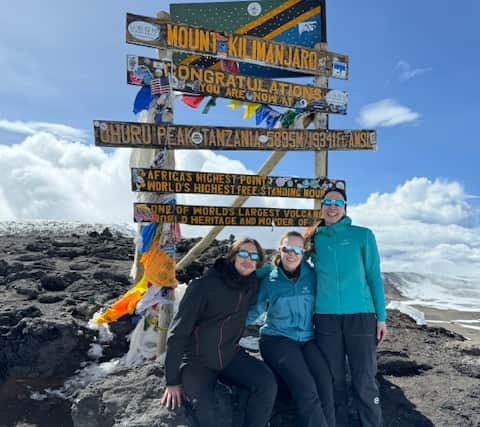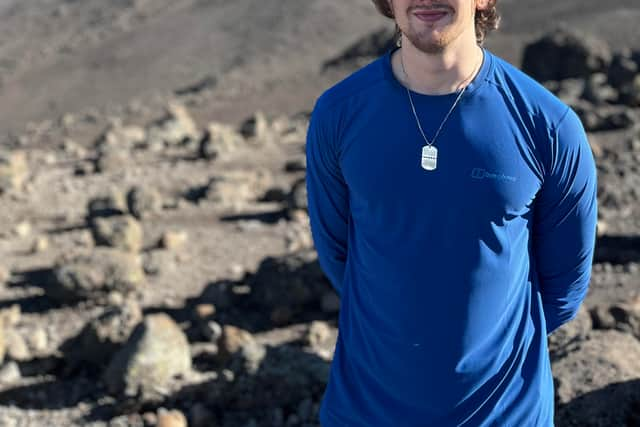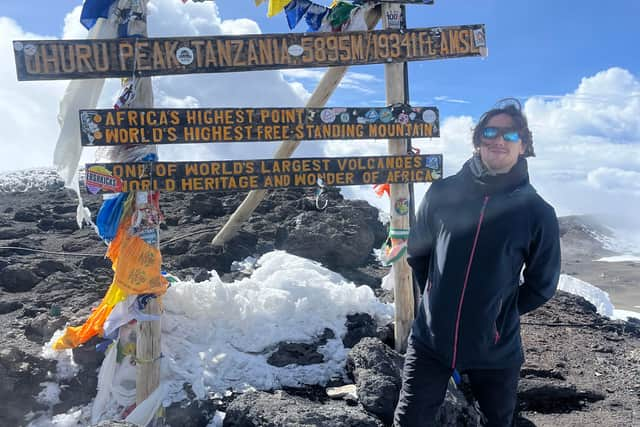"I thought of people who supported the fundraiser. That kept me keep going right to the top of Mt Kilimanjaro"
and live on Freeview channel 276
“Why do you want to climb Kilimanjaro, Jonathan?”
This was a question people asked me a lot, before and during the trip, and to be honest the answer didn’t come to me straight away. I had never done any proper hiking before, never been to Africa, and the tallest summit I had climbed was Mam Tor in Derbyshire when I was 11.
The opportunity to both see a whole new part of the world and to take on a physical challenge appealed to me, and it was a chance to raise money for a cause close to my heart. In 2019, I sadly lost my Grandad and our dog Lily to cancer. Everyone knows someone who has suffered with it, so I chose to fundraise for Cancer Research UK, and raised over £700.
Advertisement
Hide AdAdvertisement
Hide Ad

When I landed in Tanzania, it was night time and completely dark - we could have been anywhere. The following day, on the drive to Kilimanjaro National Park, it could not have been more different. I was watching the blue sky and clouds out of the car window, and suddenly realised that what I thought were clouds was actually the summit of the mountain. It was so much higher and more vast than I could have imagined.
We took the Lemosho route over eight days, seven spent going up and one coming down. The hike started through the rainforest, where I spotted a black-and-white colobus monkey, and within just half an hour I had blisters on the back of both heels. My technique was off, and my boots were not sufficiently broken in. I was fortunate to have two Norwegian sisters alongside me on the route, Susanne and Benedikte, who helped me out - they had experience travelling the world and, from what I could see, were good hikers. Admittedly I didn’t have much of a reference point, but they were sliding around less than I was. They were both friendly and kind, and made me feel at home despite being so far away.


Over the next four days we trekked over rocky terrains under harsh sun. I felt confident that I would be able to complete the hike, as I’m a very active person, and a personal trainer. One of my favourite parts was scrambling up a rock face, as it played to my strengths in weightlifting, whereas most of the time having those muscles just meant I needed more oxygen.
Each night as we ascended further, tests were done for blood oxygen and resting heart rate. My blood oxygen went down to 85% and my resting heart rate up to 80 bpm, showing just how real the physical strain of high altitude is. My guide, Charles, did shout at me on more than one occasion, “Jonathan stop running please!”, and I found I would get a pounding headache from over-exerting myself.
Advertisement
Hide AdAdvertisement
Hide AdDespite this, Charles did reassure me he had no doubts about me making it to the top. Hearing this from someone who had climbed the mountain hundreds of times was a big confidence boost.


The porters took great care of us, and gave us a lot of food. They went out of their way to help us however they could, and the way they carried multiple bags up the mountain full of cooking supplies, clothing and tents, at such a fast pace, was so impressive.
At night, the stars were incredible, and far better than what the camera on my phone could capture, which reminded me of the importance of being in the moment rather than just recording it.
We started at 7am most days, hiked for between four and six hours, and then settled at camp. On day five, which turned out to be the summit day, we arrived at Barafu Camp (4,673m) after just three hours and voted to keep going.
Advertisement
Hide AdAdvertisement
Hide AdWe spent the next hours walking on sand-coloured rocks, which turned more grey over time. Everyone in the group took one step at a time, in synchronisation, which helped us to preserve energy. During this leg, we saw two barely-conscious men being guided back down.
I started to feel lightheaded and dizzy as we climbed higher and higher, and tried to focus on taking one step at a time, and not looking at how far we had come - or how far we had to go. I thought of the people who had supported the fundraiser, and used that as motivation to keep putting one foot in front of the other.
My motivation took a hit when we reached Stella Point (5,756m), as I thought we had reached the finish point, making the next 150m the hardest stretch of the hike by far. I struggled to walk in a straight line, but I could see the real summit ahead of me, and had no doubt I would make it.
We reached the summit with lots of time to spare, to take in the view and take photos. Susanne, Benedikte and I sat by the Uhuru peak sign, taking in what he had achieved. It was so special to share a moment with the people who made the journey so valuable. I may not have been able to do it without their support, and certainly would not have enjoyed it anywhere near as much.
It's not often you do something you’ll remember for the rest of your life, but I will definitely never forget this.
By Jonathan Mirfin-Boukouris
Comment Guidelines
National World encourages reader discussion on our stories. User feedback, insights and back-and-forth exchanges add a rich layer of context to reporting. Please review our Community Guidelines before commenting.